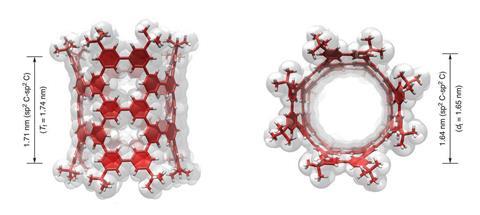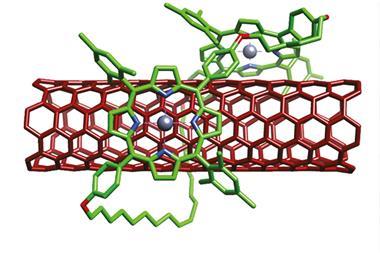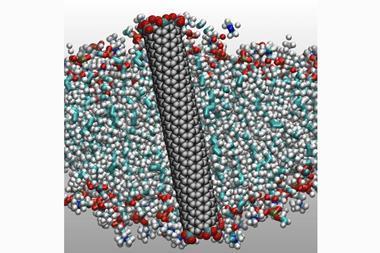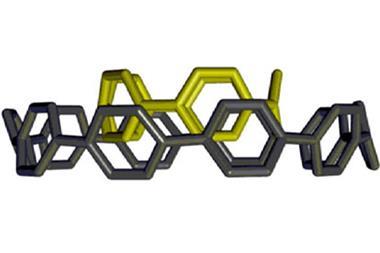Synthesis delivers molecular cylinders that contain 240 sp2-carbon atoms

Researchers in Japan have created a new form of carbon nanotube by linking together benzene rings.
Unlike regular carbon nanotubes – which resemble sheets of graphite rolled up – the benzene nanotubes made by Hirouki Isobe and colleagues at the University of Tokyo contain holes, or defects, that form a regular pattern. This could potentially be an advantage in terms of their properties – perfect nanotubes without any defects are notoriously difficult to synthesise, and often end up having defects in irregular places which have unpredictable effects on their properties.
Isobe’s team assembled one of these nanotubes in a nine-step process, first combining six benzene molecules to make a hexagonal ring – a cyclo-meta-phenylene (CMP). They joined four CMPs to form first an open-ended cube, then a circle shape using platinum atoms. Finally they used a series of coupling reactions to combine several of these CMP circles to make a cylinder containing 40 benzene rings bonded to each other at the 1, 3 and 5 positions. They confirmed the porous and tube-like nature of the compound they had created using spectroscopy and crystallography.
Computational follow-up studies indicated joining several of these cylinders together end-to-end could allow them to build carbon nanotubes with regular defects which could be used to modulate their electronic properties.
References
Z Sun et al, Science, 2019, DOI: 10.1126/science.aau5441

















No comments yet